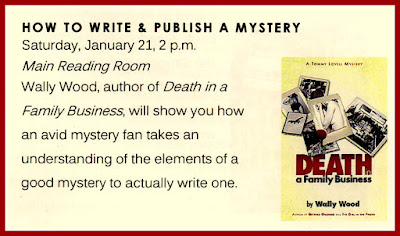Montalbano in this book is 58-years-old. He's an experienced Sicilian homicide detective who has to—you will excuse the reference—thread his way between the Scylla of the local mafia and the Charybdis of a corrupt political system. Montalbano may be able to solve the crime, but there's no guarantee that justice will be done.
 This tension, between a (relatively) honest police detective and forces well beyond any individual's control is one of the things that makes the Montalbano mysteries interesting. They are also interesting puzzles, and Camilleri does not, for the most part, cheat the reader. (He will, as we're coming down to the denouement, not reveal exactly what Montalbano has planned, only that he has plans.) And the books are, for me at least, convincing pictures of what a certain slice of contemporary Sicilian life is like.
This tension, between a (relatively) honest police detective and forces well beyond any individual's control is one of the things that makes the Montalbano mysteries interesting. They are also interesting puzzles, and Camilleri does not, for the most part, cheat the reader. (He will, as we're coming down to the denouement, not reveal exactly what Montalbano has planned, only that he has plans.) And the books are, for me at least, convincing pictures of what a certain slice of contemporary Sicilian life is like.Montalbano has to solve two crimes in A Voice in the Night: A routine supermarket burglary turns unroutine when the store manager is found hanging in his office—and forensic evidence suggests he was murdered. Almost simultaneously a lovely young woman is found brutally slaughtered in the apartment of one Giovanni Stranglo. Stranglo has a solid alibi, but, as it happens, his father is the president of the province. Traveling with Montalbano as he works with his staff to solve the two cases (we never leave the inspector's point of view; my preference in a mystery), we watch him uncover clues and red herrings and—surprise!—solve the crimes.
The book is not perfect. In an attempt, I suspect, to suggest the Sicilian dialect, the translator has one of the thankfully minor characters talk like this: "My virry best wishes wit' all my 'eart for a rilly, rilly long life an' alla 'appiness an' 'ealthiness inna world, Chief!" I find a little of this goes a long, long way. Also Camilleri wrote the book when Silvio Berlusconi was Italy's prime minister, so there are a few topical references that are outdated.
Nevertheless, for readers who have been following Inspector Montalbano's career, A Voice in the Night is a creditable entry in the series. And for mystery lovers who do not know the detective, it's time to make his acquaintance.


